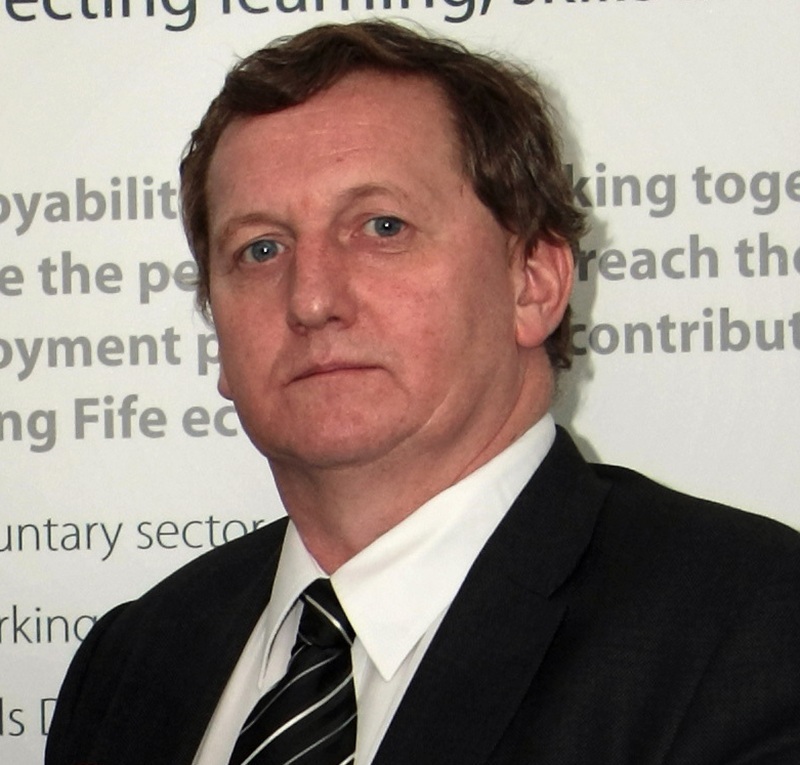Fears of a return to the ”days of the Kirkcaldy Kremlin” were expressed by opposition councillors as the new Labour leader of Fife Council, Councillor Alex Rowley, unveiled radical proposals for a new form of political governance in Fife.
To address public cynicism about politics and one of the lowest ever voter turnouts at the recent council elections, Mr Rowley expressed hope that the new system will ”reconnect” with the public and foster more mature, transparent decision-making.
The proposed cabinet committee model, based on that used by other Scottish councils, would replace the traditional committee decision-making system with a model Mr Rowley believes will offer greater scrutiny and inclusiveness.
Before the election, the council operated eight strategic committees, a standards and audit committee and seven area committees.
The proposed new set-up would keep more powerful area committees but introduce a decision-making executive committee which would be scrutinised by new committees with”call-in” powers.
Mr Rowley said: ”The motion I put forward today is that this council believes that the political governance of the council must allow it to take decisions based on what people think, reconnect the people of Fife with their council and have a transparent, timely and inclusive decision-making process.
”To see the need to reconnect, we don’t need to look any further than the election where in some areas, 50% or 60% of people chose not to vote because they didn’t think it was relevant to their lives.
”We face very difficult times ahead, of that there is no doubt. That’s why we must open up scrutiny into what we are doing and why we are doing it. The structure is a means to an end. It’s the policies that matter.”
But, while not opposed to reform in principle, opposition and SNP group leader Councillor Peter Grant expressed concern that the SNP, as the second biggest party in Fife with 26 councillors, might not be fairly represented on this ‘executive’ committee.
He called for assurance of political balance, saying it would be unfair if Fife Council’s three Tories and four independents were given undue representation simply because, while not in coalition, they had given informal backing to Labour, which has only 35 councillors of its own.
Mr Grant said: ”It would be a travesty if Labour started imposing a single-party dictatorship in Fife. It’s as if we are going back 20 years to the days of the Kirkcaldy Kremlin.
”I agree there are different ways of doing things, but where was this restructuring mentioned in Labour’s manifesto?”
Lib Dem group leader Councillor Tim Brett also voiced concern at the proposal to abolish the all-party strategic committees.
While previously all decisions were made by committees reflecting the council’s political make-up, responsibility would lie with one portfolio holder for each policy area.
Mr Brett said:”We have some serious concerns with this proposal for an executive structure. We feel very strongly that the consensual, democratic decision making of all-party committees was far more in the interest of the people and led to better policies.
”Instead, the big decisions will be taken by a very small group of councillors, overwhelmingly representing a party who less than one in six Fifers voted for.
”Indeed, those who did vote for Labour will not have seen this cabinet structure anywhere in their manifesto, and this will lead to backbenchers, even from within the Labour party, being alienated from decision making.”
He added: ”We are encouraged by proposals to strengthen the area committees established under the last administration, as proposed in our own manifesto. However we caution the new administration against removing the planning function of these area committees, as the area committees are by far best placed to understand the local issues around planning applications and make the best decisions for local people.”
Tory leader Councillor Dave Dempsey backed the changes in principle as he felt they would allow all-party groups to engage in decision-making at an earlier stage.
The Labour administration, backed by the three Conservative and four independent councillors, put forward a discussion paper on the proposals on Thursday. They will be discussed at a further full meeting of Fife Council next Thursday.The new line-upFife Council formed a new minority Labour administration at its first meeting since the May 3 elections.
The new council will be led by Councillor Alex Rowley in his second term as administration leader with Councillor David Ross as depute.
Councillor Jim Leishman was elected to serve as provost, with Councillor Kay Morrison his depute. The votes cast for all positions were 42 to 35.
Mr Rowley said: ”We are ambitious for Fife and over the next five years we’re going to do everything we can to improve the quality of life for the people we’re here to represent.
”Today, as a council, we agreed it’s critical to work together and I’ll do everything I can to make sure all councillors can get involved. We want to lead a council that is transparent and inclusive, putting people first.”
Mr Ross said: ”We believe that more decisions should be made locally and we want to give communities more of a say in things which affect them directly.
”I’m looking forward to the challenge of tackling the issues in Fife, such as youth unemployment, the housing shortage and the ever increasing demand for care services.”
Former SNP council leader Peter Grant was appointed leader of the opposition.
